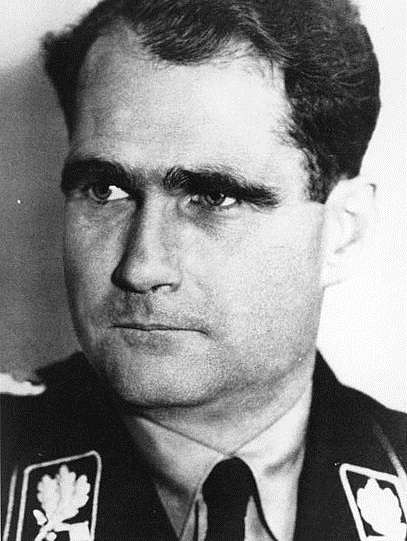HITLER’S deputy Rudolf Hess flew to Scotland with a peace proposal which would have seen the Nazis withdraw from Western Europe, a new book claims.
Author Peter Padfield says Hess’s plan was aimed at getting Britain out of the war so that Germany could concentrate its might against the Soviet Union.
His controversial theory challenges the conventional wisdom that Hess, the deputy Fuhrer, shocked Hitler to the core by flying to Scotland without his knowledge or permission in 1941.

Padfield, an award-winning historian, says Hess carried with him a peace plan – written in English and German – which made clear Hitler was about to go to war with Stalin.
As well as suggesting the Allies knew of the imminent invasion but failed to warn Moscow, Padfield says it should have been clear at the time that the Germans were planning a war of racial extermination in the Soviet Union.
Padfield’s Book – Hess, Hitler and Churchill – claims to shed fascinating new light on the events of May 10, 1941, when Hess crashed his Messerschmitt and parachuted to safety near the town of Eaglesham, just south of Glasgow.
Hess was stopped by a local ploughman, David McLean, and eventually to the Home Guard before locked up and questioned at a number of Scottish locations. Further interrogation took place in England.
Padfield said the information in his book came from John Howell, wealthy Sussex landowner, now dead, who was himself in contact with a wartime intelligence expert.
This unnamed German speaker, also deceased, had examined the written peace proposals Hess brought with him.
The informant revealed that Hess’s detailed proposals set out Germany’s withdrawal from Western Europe in exchange for “wohlwollende Neutralitat” – well-meaning neutrality – with Britain.
Padfield said: “The first two pages detailed Hitler’s aims in Russia, outlining the precise plan for conquest and the destruction of Bolshevism.
“Other sections stipulated that Great Britain keep out of all Continental entanglements, in return for which she would retain her independence, her Empire and her armed services.
“German forces would leave France, but since France and other Western nations had colonies which provided friction with the British Empire, detailed provisions were made for the strength of forces in these areas.”
Buried
The informant was part of a group assembled by civil servant Ivone Kirkpatrick to translate the documents into English, the book says.
Padfield added: “Hess would not have done anything without Hitler’s approval. I’m quite certain Hitler would have OK’d it.”
He said if the peace plan were made public, it would have damaged efforts to bring America into the war and brought down the government.
“Churchill’s government would have been toppled,” said Padfield. “I don’t think it would have survived the fact that Germany was offering to leave the occupied countries.
“You can imagine why he buried it.”
He says copies of the documents Hess brought with him have never been released and may have been destroyed.
Hess was trying to contact the Duke of Hamilton at his Dungavel House estate, believing he was prominent in the peace movement and would help open negotiations.
Padfield continued: “Why they’re still hidden, you can only put down down to if the Royal family were involved or if Hess brought news of the coming Holocaust.”
Since Hess’ peace mission failed and Churchill opted to continue fighting Germany, it suited all sides to paint Hess as a madman, the author argues.
Mr Padfield believes that Hess had an arrangement with Hitler that, if the trip failed, it should be dressed up as an act of madness on his part.

